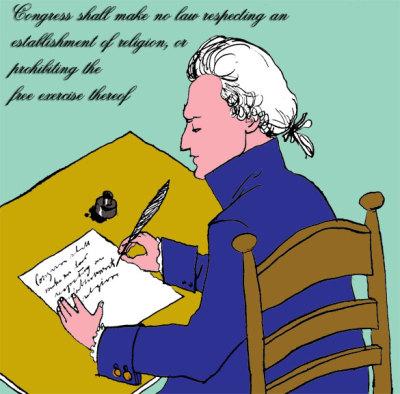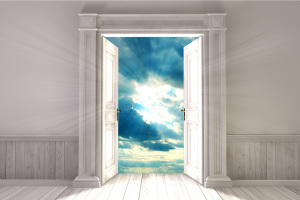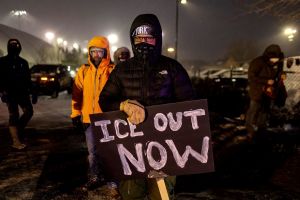John Leland: American patriot and First Amendment hero

The great and inspiring story of how American patriots forged a new nation that enshrined and guaranteed the “inalienable rights” that we have been privileged to inherit and enjoy for more than two centuries is filled with the contributions of extraordinary men, many of whom are not as well known to posterity as they should be.
One such American hero is the Rev. John Leland (1754-1841). Leland, born in Massachusetts, became a Separate Baptist (a new denomination arising out of the First Great Awakening) in 1775 and an evangelist to Virginia in 1776. From then until his return to his native Massachusetts in 1791, Leland became the preeminent Baptist pastor-evangelist in Virginia and North Carolina, probably baptizing approximately 20,000 new converts before his return to Massachusetts.
As a consequence of the ministry of men like Leland, by the end of the Revolutionary War, Baptists had become the most numerous denomination nationally.
Leland, like his fellow Baptists, were adamantly opposed to state-sponsored “official” churches at the state level, and were determined that any national or federal government must never have such an “official” church.
Leland was recognized nationally as one of the leading opponents of the kind of “official” government church that had been adopted by nine of the original thirteen colonies.
He explained his position in A Chronicle of His Time in Virginia:
“The notion of a Christian commonwealth should be exploded forever — Government should protect every man in thinking and speaking freely, and see that one does not abuse another. The liberty I contend for is more than toleration, the very idea of toleration is despicable; it supposes some a pre-eminence above the rest is great indulgence, whereas all should be equally free, Jews, Turks, Pagans, and Christians.”
No wonder that when John Leland died at 87 and was buried in North Adams, Massachusetts in 1841 his tombstone read:
“Here lies the body of John Leland, of Chesire, who labored 67 years to promote piety and vindicate the civil and religious rights of all men.”
Leland, well-known during his lifetime, has faded in the nation’s memory in the last two centuries. However, he was an active participant in two of the most important religious liberty events in the nation’s early history.
As stated earlier, Baptists, despite being severely persecuted in some of the nine colonies with established state churches (Virginia and Massachusetts particularly) had grown to numerical preeminence. Leland, as their best-known leader, had led them to threaten to vote against ratification of the new Constitution unless provision was made to prohibit such a federal state church in the proposed new Constitution.
These discussions led to a historic 3-hour meeting between James Madison (“father of the Constitution”) and Leland in Orange County near Madison’s Montpelier home on March 17, 1788. In that meeting, they cut a political deal. Leland would encourage Baptists to vote for a ratification of the proposed Constitution. In turn, Madison promised that he would work to bring about an amendment to the new Constitution, if ratified, to guarantee freedom of religion. These promises were fulfilled in the ratification of the First Ten Amendments in 1791 with freedom of religion guaranteed in the First of the Amendments.
Leland returned to his native Massachusetts in 1791, becoming a leading evangelist and spokesman for Baptists in a state with one of the most aggressive state-sponsored churches (along with Connecticut and Virginia).
Leland remained active in the political sphere as well, culminating in his helping to organize Baptists to vote for Thomas Jefferson in the hotly contested presidential election of 1800. Known by historians as perhaps the ugliest and most vicious presidential election in American history, John Adams and Thomas Jefferson engaged in a bare-knuckles political brawl. Adams’ Federalists attacked Jefferson mercilessly and told people if Jefferson won, Jefferson’s supporters would confiscate their Bibles!
After Jefferson’s victory, his supporters in Massachusetts, including the overwhelming majority of Baptists, decided to send the President a giant cheese as a symbol of their gratitude for his presidency. They elected Leland to take the cheese to Jefferson in the nation’s capital. The cheese (reported to be in excess of 1235 lbs. in weight) was transported by wagon from Massachusetts to D.C.) Leland would pause along the way, crowds would gather to gawk at the cheese, and Leland, the evangelist, would preach a sermon.
On January 1, 1802, by previous arrangement, John Leland arrived at the White House to present the cheese to the president. As Leland presented the cheese, he assured his friend, President Jefferson, that no Federalist cows had contributed milk to the cheese, only Democratic-Republican cows. After receiving the cheese with appropriate gratitude from Leland, the president went back into the White House, and over lunch finished the final draft of his reply to the Baptists of Danbury, Connecticut. The Connecticut Baptists had petitioned President Jefferson for relief from the onerous restrictions placed upon them by the Congregational state official state church in Connecticut.
Jefferson’s “Letter to the Danbury Baptists” was destined to become famous because of its being referenced in several Supreme Court decisions. Jefferson told the Danbury Baptists
“Believing with you that religion is a matter which lies solely between Man & his God, that he owes account to none other for his faith or his worship, that the legitimate powers of government reach actions only & not opinions, I contemplate with sovereign reverence that act of the whole American people which declared that the legislature should ‘make no law respecting an establishment of religion, or prohibiting the free exercise thereof;’ thus building a wall of separation between Church & State. Adhering to this expression of the supreme will of the nation in behalf of the rights of conscience, I shall see with sincere satisfaction the progress of those sentiments which tend to restore to man all his natural rights, convinced he has no natural right in opposition to his social duties.”
Although the letter received only passing interest at the time it was released, the “wall of separation” phrase came to have historic significance in later debates concerning “separation of church and state.” In 1876 in Reynolds v. United States the Supreme Court stated “that it may be accepted almost as an authoritative declaration of the scope and effect of the [first] amendment.”
In 1947 and 1948 the Court asserted in McCollum v. Board of Education, that, “in the words of Jefferson, the clause against establishment of religion by law was intended to erect ‘a wall of separation between church and state’.” This “strict interpretation” of Jefferson’s phrase was used to restrict religion in public life.
Many others, including Chief Justice William H. Rehnquist, lamented that “unfortunately the Establishment Clause has been expressly freighted with Jefferson’s misleading metaphor for nearly 40 years.”
Supporting Rehnquist’s view that Jefferson meant a separation of the institution of the state and the institution of the church, and not a removal of religion from public life is the fact that President Jefferson attended a Christian worship service in the House of Representatives the day after sending the letter and John Leland preached the sermon. It is recorded that Jefferson often attended the Sunday worship services in the House of Representatives, with sermons delivered from the speaker’s rostrum. Clearly, Jefferson did not see the need for removal of religious expression in public and government spaces. These weekly worship services continued until 1850.
It should always be remembered that Thomas Jefferson, in designing the campus of the University of Virginia (a state institution) placed a chapel in a prominent place on the main quadrangle.
Dr. Richard Land, BA (Princeton, magna cum laude); D.Phil. (Oxford); Th.M (New Orleans Seminary). Dr. Land served as President of Southern Evangelical Seminary from July 2013 until July 2021. Upon his retirement, he was honored as President Emeritus and he continues to serve as an Adjunct Professor of Theology & Ethics. Dr. Land previously served as President of the Southern Baptist Convention's Ethics & Religious Liberty Commission (1988-2013) where he was also honored as President Emeritus upon his retirement. Dr. Land has also served as an Executive Editor and columnist for The Christian Post since 2011.
Dr. Land explores many timely and critical topics in his daily radio feature, “Bringing Every Thought Captive,” and in his weekly column for CP.



























